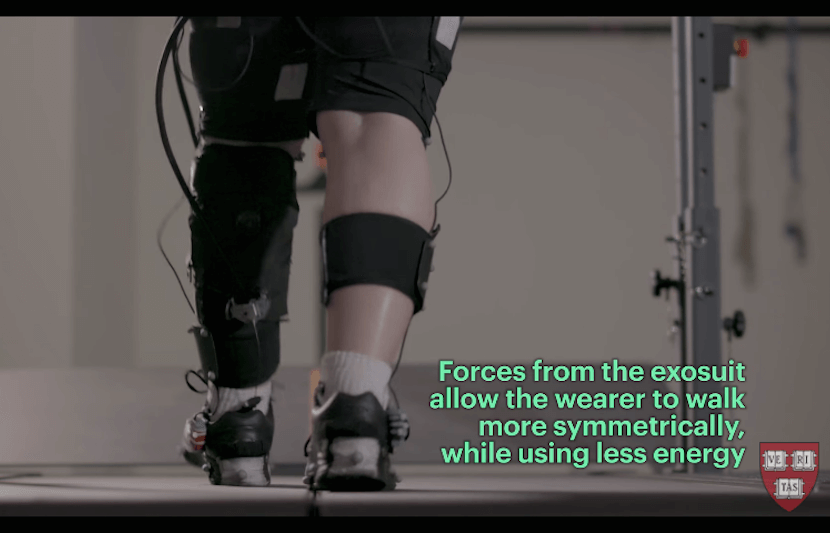A research team at Harvard University’s John A. Paulson School of Engineering and Applied Sciences (SEAS), in conjunction with the Wyss Institute for Biologically Inspired Engineering at Harvard and Boston University’s College of Health & Rehabilitation Sciences: Sargent College, have developed a prototype “exosuit” to help stroke victims walk normally.
A stroke can have an incredibly devastating effect on an individual’s body and mind. Approximately 80 percent of stroke victims suffer some form of mobility loss in at least one limb–a condition known as “hemiparesis.” Sufferers of hemiparesis often lose the ability to walk in a straight line; instead, they have to either hike their hips up or swing the affected leg in an outward circle in order to move forward. The standard prescription for this condition is a plastic ankle brace, which, while better than nothing, fails to correct the abnormal walking style characteristic of hemiparesis in an astonishing 85 percent of cases.
The exosuit is attached to the limb stricken with hemiparesis in the form of a piece of skin tight clothing, and uses mechanical power to supply the extra force necessary for the limb to move normally. The exosuit is powered by a battery worn on a hip belt, and the power is transmitted to the affected limb through a series of cables, similar to the way in which the muscles in our palm and forearm move our fingers using tendons.
“[I]n treadmill experiments we found that a powered exosuit improved the walking performance of seven post-stroke patients, helping them to clear the ground and push off at the ankle, thus generating more forward propulsion,” Jaehyun Bae, SEAS graduate student and co-first author on the study, told the Harvard Gazette.
The exosuit was also successful at correcting the abnormal gaits of patients under regular walking conditions (i.e., not on a treadmill). When walking while wearing the exosuit, the symmetry between the patients’ affected and unaffected legs increased, fostering normal walking patterns.
ReWalk Robotics, a company that manufactures and distributes mechanical devices designed to help those suffering from diminished ambulatory abilities, has taken an interest in this prototype exosuit, and has entered into a five-year partnership with the Wyss Institute with the goal of mass-producing and widely commercializing exosuits based on the prototype.
“We see our first study as foundational as it shows that soft wearable robots can have significant positive impact on gait functions in patients post-stroke,” Conor Walsh, professor of engineering and applied sciences at Harvard, told The University Network. “We are working with ReWalk to optimize the device, and the intent is to use them in clinical trials aimed at obtaining regulatory approvals in 2018, so the device can be marketed worldwide.”
Walsh predicts that exosuit technology will be implemented first in stroke patients, then expanded to increase mobility in those with multiple sclerosis and other debilitating conditions, and eventually being put to use assisting the elderly in staying active.
The paper is published in Science Translational Medicine.
The research team also includes Terry Ellis, Louis Awad, Kenneth Holt, Kathleen O’Donnell, Stefano De Rossi, Kathryn Hendron, Lizeth H. Slott, Pawel Kudzia, and Stephen Allen.



